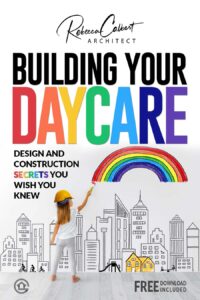If you’ve ever wondered why some daycare centers thrive more than others, the answer might surprise you! In the “Daycare Center Building and Street Sign Design Elements for Success,” you’ll learn that it’s not just outstanding curriculum or dedicated staff that brings success. The building’s aesthetics and street sign design play a fundamental role in drawing families in and ensuring continuous business growth. They are more than just eye-catching attributes; they symbolize your daycare’s personality, its commitment to safety, and a welcoming environment for all children.
Building Location and Accessibility
When it comes to setting up your daycare center, the location and accessibility of the building should be your top priority. This is fundamental to building a successful daycare center since parents will consider the convenience of the location before enrolling their child. Having an accessible location not only makes it easier for parents and guardians but also contributes to the overall daycare operation.
Considerations for choosing a location
Choosing the right location for your daycare center is crucial. You should consider factors such as the population density of young families in the area, proximity to residential neighborhoods, primary schools, and main traffic arteries. Also, look for a locale that has safe pedestrian paths and is free from heavy traffic and noise pollution.
Easy access for parents drop-off and pick-up
Anything that makes drop-off and pick-up routine easier for parents will increase their satisfaction with your daycare service. Ample parking space, a quick access route to the facility, and comfortable waiting areas can all contribute to a stress-free experience for parents.
Ensuring safe and efficient traffic flow
The safety of the children is paramount. Therefore, the facility’s entrance and exit points should be designed for efficient traffic flow. Separate entrance and exit paths can aid in avoiding possible collisions and congestion during busy hours.
Maximizing visibility from the street and surroundings
Your daycare center should be easily visible from the street and surroundings. This doesn’t just aid in accessibility, but also acts as a continuous advertisement for passers-by. Consider a location with minimal obstructions to the view of your facility.
Building Architecture and Aesthetics
The aesthetics and architecture of your daycare center play a large role in attracting patrons. The building should be appealing and inviting, while also being functional for its purpose as a learning and play area for children.
Tailoring the design to suit the age and developmental levels of children
The design of the building should be tailored to suit the age and developmental levels of the children it will serve. The architecture should promote mobility, exploration, and safety. For instance, wide spaces for group activities, lower sinks for independent hand washing, and soft corners in case of falls.
Implementing cheerful, color-rich architectural features
Colors and creative elements have a significant impact on the development and mood of children. Implement cheerful, color-rich architectural features and textures to stimulate the children’s imagination and creativity.
Ensuring an inviting, friendly and home-like atmosphere
Creating a home-like atmosphere can make children feel safe and comfortable, reducing potential anxiety or homesickness. Warm, welcoming colors, cozy furniture, and familiar architectural features can create this comforting atmosphere.
Inclusion of green spaces and outdoor play areas
Outdoor play is integral to a child’s development. By including green spaces and outdoor play areas in your architectural plans, you provide children the opportunity for physical activity, fresh air, and interaction with nature, all of which contribute to their health and well-being.
Building Interior Layout and Design
The interior layout of your daycare center is equally pivotal in ensuring an enjoyable, comfortable, and safe learning environment for the children.
Creating comfortable and safe learning spaces
Creating comfortable and safe learning spaces is essential to foster a positive learning environment. Each play area or classroom needs to be spacious enough to accommodate the children and their activities comfortably, providing enough freedom for movement and exploration.
Use of natural light and optimal classroom sizes
Classrooms should be designed to make the best use of natural light. Large, well-positioned windows can fill the room with light and create a warm, inviting atmosphere. The classroom size should also be optimally designed to accommodate the specific number of children that aligns with the child-to-teacher ratio.
Incorporation of themed decor elements
Themed decor elements can make the daycare center more appealing and engaging for children. Themes could be based on popular children’s stories, animals, nature, or any other relevant and age-appropriate topic.
Allocating areas for meals, rest, and personal hygiene
Allocating specific areas for meals, rest, and personal hygiene is also crucial in the daycare’s design. Children should have a quiet, soothing place to rest, a clean space for eating, and easily accessible areas for personal hygiene.
Building Safety and Security Measures
Your daycare center’s safety and security measures are of utmost importance. Parents need to feel assured that their children are safe in your care.
Implementing emergency exits and safety protocols
Every daycare center must have clearly marked emergency exits and clearly defined safety protocols. Regular drills should be conducted to ensure all staff members and children know what to do in case of emergencies.
Security systems such as cameras and entry-control devices
Installing security systems such as surveillance cameras, entry-control devices, and alarms can add an extra layer of security to your daycare center. These measures can help prevent unauthorized access and keep a check on the daycare operations.
Incorporating child-friendly furniture and fittings
All furniture and fittings in your daycare center need to be child-friendly to avoid any accidents. This means rounded corners, non-slip surfaces, safe storage for toys, and handles and switches that children cannot easily tamper with.
Adherence to building codes and zoning regulations
Last but not least, ensuring adherence to building codes and zoning regulations is extremely important. These codes have been placed to ensure the safety and well-being of the inhabitants of a building.
Signage Basics for Daycare Centers
Signage is an important aspect of your daycare center’s visibility and branding. Effective signage can attract prospective clients and make it easier for parents and visitors to navigate your facility.
Importance of daycare signage
Daycare signage is vital as it not only brands your facility but also provides important information. Signs outside the facility can advertise your services to potential clients, while signs inside the facility can provide instructions and guidelines for parents, children, and staff.
Making use of readable fonts and vibrant colors
Your daycare signs should use readable fonts and vibrant colors to catch the eye. This not only makes reading easier but more likely to draw attention.
Keeping the message clear and brief in signage texts
The text in your signs should be clear, brief, and to the point. Overly complicated or lengthy texts can lead to confusion and frustration. Instead, keep it simple and easy to understand.
Strategically Positioning your Daycare Signage
Where you place your daycare signage can be as important as the design itself.
Maximizing visibility by choosing the right spot for your signage
Choosing the right spot for your signage can maximize its visibility. High traffic areas, main entrances, and areas with clear sightlines from major roads should be considered.
Considering line of sight and traffic direction
When positioning your signage, consider the line of sight from common viewpoints and the direction of traffic flow. This way, your sign is easily noticeable by pedestrians and drivers alike.
Placement of additional signs on the property as per need
Additional signs on the property should be placed where needed, for example to demarcate parking spaces, point out entrances and exits, or indicate different areas of the facility.
Innovative Signage Design Ideas
While traditional signs are important, consider incorporating some innovative designs for added appeal.
Utilizing three-dimensional letters or symbols
Three-dimensional letters or symbols can add depth to your sign and make it stand out. This gives a modern and professional look to your signage.
Adding nighttime illumination for 24-hour visibility
Nighttime illumination can ensure your signage is visible 24/7. This makes your daycare center easy to locate, even after dark.
Incorporation of the daycare’s logo or mascot
Including your daycare’s logo or mascot in your signage can enhance brand recognition and make your signage more memorable.
Complementary Street Signage Designs
In addition to the signage on your daycare center premises, you should also consider complementary street signage.
Cohesively designing street signs with building signs
Street signs should be designed cohesively with your daycare signage. Consistent colors, fonts, and logos can reinforce brand recognition.
Designing easy-to-read street signs from a distance
Street signs should be easy to read from a distance, to give drivers enough time to locate and turn towards your daycare center. Larger fonts and contrasting colors can help achieve this.
Combining directional signs with daycare branding
Combining directional signs with daycare branding can serve two purposes: guiding parents and visitors to your facility and promoting your daycare at the same time.
Checking Local Regulations for Signage
When you’re setting up your daycare signage, don’t forget to check local regulations.
Adherence to local signage codes and ordinances
Every locality has specific signage codes and ordinances. These laws should be adhered to when designing and installing signage to avoid penalties and fines.
Applying for permits if necessary
Some localities require permits for certain types of signage. Ensure that you apply for the necessary permits before installing your signs.
Ensuring signage does not obstruct traffic sightlines
It’s important to ensure that your signage does not obstruct traffic sightlines. This can be unsafe and may also violate local zoning laws.
Maintaining and Updating Signage
Keeping your daycare signage in good condition is as important as creating it.
Regular cleaning and maintenance of signs
Regular cleaning and maintenance of signs can ensure they remain attractive and legible. This includes cleaning off dirt, fixing peeling paint, and replacing burnt-out bulbs.
Updating signs with any changes in hours or daycare services offered
If there are changes in your daycare’s operating hours or services offered, update your signs accordingly. This way, you’ll avoid confusion and keep parents informed.
Replacing weathered or damaged signs promptly
Weathered or damaged signs can reflect negatively on your daycare. Therefore, any signs showing signs of wear and tear should be replaced promptly. This ensures your daycare continues to project a professional and well-maintained image.


